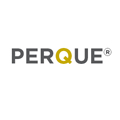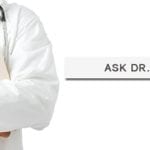Detoxification is defined as “the process of removing toxic substances or qualities”. We are all designed with an innate detoxing ability. Over time, the cumulative affect of poor food choices, stressful lifestyles, and unidentified delayed hypersensitivities (basically the lifestyle in the 21st century) wear down our ability to detoxify efficiently. It’s recommended that we boost our detoxing abilities at least once a year, but twice a year (every 6 months) is ideal. The concept of metabolic detoxification is a widely used treatment in integrative and complimentary medicine. The process is based on the idea that illnesses can be caused by the accumulation of toxins in the body. By removing these toxins, avoiding new ones, and through identification of immune intolerance to them through Lymphocyte Response Assays, healthcare practitioners can give patients the essential tools for the healing process.
The consequences of toxic overload can be seen in a wide range of patient profiles. It can precipitate long-standing conditions such as chronic fatigue syndrome and fibromyalgia; it can over-burden the immune system by triggering hypersensitivities; and can contribute to a plethora of issues such as anxiety, arthritis, asthma, diabetes, headaches, digestive disorders, and heart disease. In all of these circumstances, preventative detoxification is recommended as a tool to increase energy, vitality, and improve overall health. With over 100,000 chemicals introduced to our world over the last 50 years, we can all benefit from boosting our own natural detoxing abilities.
There is definitely no shortage of “detox” products and suggestions available, but how are consumers to know which to choose? Of the 3.3 million Google search results for “how to detox by body”, many confuse the terms “cleanse” and “detox”, very few are a complete and effective system, and many include unhealthy and/or unproven ingredients. Given the confusing and sometimes conflicting advice and recommendations coming from countless online sources, the role of healthcare practitioner as coach and guide is vital.
A multi-system program addressing phase I, II, and III detoxification is recommended for optimal outcomes. In most situations, phase I enzymes begin the detox process by transforming fat-soluble compounds into water-soluble compounds in preparation for phase II. Even though these toxins have now been converted to something more water-soluble, they are still not suitable for elimination. The phase I process is not sufficient in making the compound water-soluble enough to complete the entire elimination process and it’s thought that the products from the phase I process are more reactive than the original toxin making them potentially even more destructive. Both issues are addressed by the phase II enzymes, which makes the product even more soluble and less toxic. Water-soluble compounds require specific transporters, which occur in phase III. Phase III transporters are available in many tissues: liver, kidneys, intestines, and brain where they provide a mechanism for transporting toxins out of the cells, especially through bile.
Given the amount of enzymes and proteins involved during the detoxification process, it’s no surprise that the outcomes depend on a number of dietary factors. Both macronutrient and micronutrient intake influence phase I and II processes. Deficiencies in vitamins A, B2, B3, folate, C, E, iron, calcium, copper, zinc, magnesium, and selenium have all been shown to decrease the activities of one or more phase I enzymes, (Nordberg M. Metallothioneins: historical review and state of knowledge. Talanta 1998) Glycine and glutathione are key phase II detoxifiers along with CoQ10. In any comprehensive detoxification protocol, the liver needs to be given a great deal of attention as it is through this organ that most of the toxins are metabolized. Milk thistle has been extensively researched and found extremely beneficial for liver disease due to its key polyphenolic component, silymarin. This antioxidant herb encourages and supports healthy detoxification. Along with sulfur containing amino acids like methionine and cysteine, adding cruciferous vegetables, onions, and garlic helps promote enzyme activity. Patients should adopt a diet that makes staples of these bio-detox superfoods.
Complete and optimal detoxification involves making the right diet and lifestyle choices. While it may not be possible to completely eliminate our exposure to toxins, we can minimize the damage by:
– Purchasing pesticide free, local fruits and vegetables as much as possible and wash produce before eating. Remember that organic doesn’t necessarily mean pesticide free.
– Limit consumption of processed foods. Shop the perimeter and use the 80/20 (alkaline/acid foods) rule to balance your plate.
– Store food in glass to avoid BPA and phalates. Do not reheat food in plastic containers.
– Be kind to your body. Practice meditation either guided or solo to relax your mind and tune in to your inner wisdom and peace.
– Explore the healing benefits of dichromatic lights.
– Move your body! Exercise reduces inflammation and promotes a feeling of well-being.
For more information about detoxification, please visit https://www.perque.com/detox/
Did you enjoy this post? We post new content regularly! Click here to see our latest blog posts.




